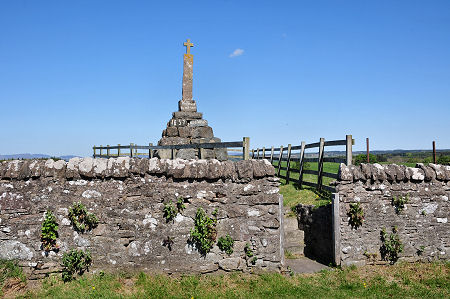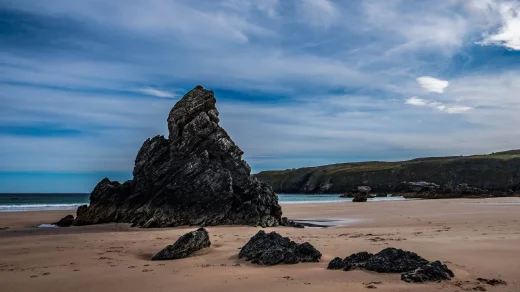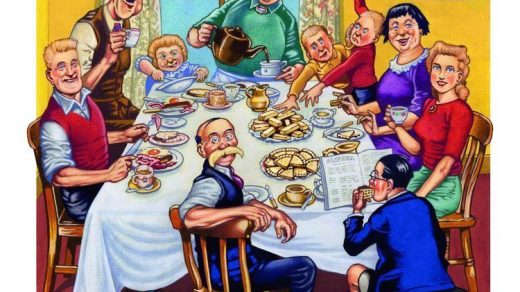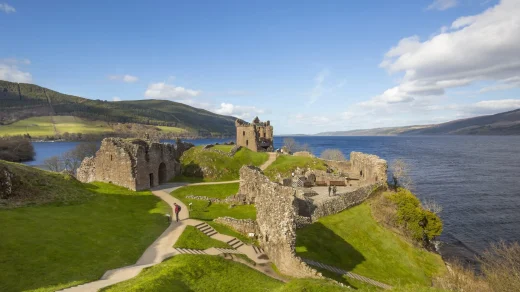On the north side of the B8062 a little under a mile west of Dunning, a gap in the stone wall and some steps give access to one of Scotland’s spookier monuments. This is the memorial to Maggie Wall, who, it says, was burned here in 1657 as a witch.
It’s a pretty imposing monument. It stands nearly 20ft high and is made of large stones held together by hefty iron staples. As the photographs show, it comprises a square tapering base on which is placed a stone pillar, and the whole thing is topped off by a stone cross.
Witch-hunting in Scotland (and more widely across Europe) began in the mid-1500s, but it received a boost here when King James VI took a personal interest and published a book on the subject. During the period between 1563 and 1736 not far short of 4,000 people, mainly women, were tried for witchcraft in Scotland, and an unknown number, perhaps two-thirds of those accused, were executed as witches. It’s easy to leap to the conclusion that Maggie Wall was one of them. (Continues below image…)
 |
Or perhaps not… The odd thing is that no-one has ever been able to find out anything about Maggie Wall, and there are a number of issues about the monument itself which are very mysterious.
Although detailed records were kept of many witch trials, nothing has ever turned up mentioning Maggie Wall. Records show that six alleged witches were executed near Dunning in 1663, and that an alleged warlock, Johnnie Gothrie, was tried here in 1657. But of the elusive Maggie Wall, nothing at all is known.
Then you have to ask who built such an imposing monument here, and also when, and why. One school of thought is that it was erected not long after the event it commemorates by the local landowner, Lord Rollo. Others feel that the way the stones are fixed together suggests the monument was erected in the early 1800s, over a century and a half later. It’s also been suggested that there are echoes in the monument of the storyline of Sir Walter Scott’s novel “Ivanhoe”, in which the hero saves Rebecca after she is accused of being a witch. The novel was first published in 1820, so if there is a link, then the monument must have been erected after that date. The truth is that no-one knows, and no-one is ever likely to.
Whatever the timing of the monument’s erection, and the reasons for it, the local landowner must at least have given permission for its erection. Building it would have taken some effort and cost. Two further mysteries surrounding the memorial have a continuing resonance. The painted lettering is said to be reapplied periodically to ensure it remains fresh and legible. No-one seems to know who does the repainting. And the significance, if any, of a number of children’s toys and other objects wedged in place on the memorial is also unclear.



